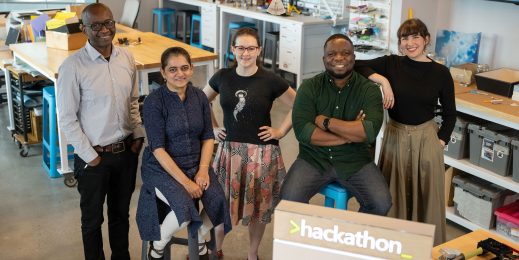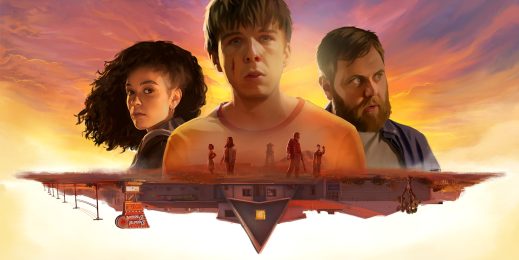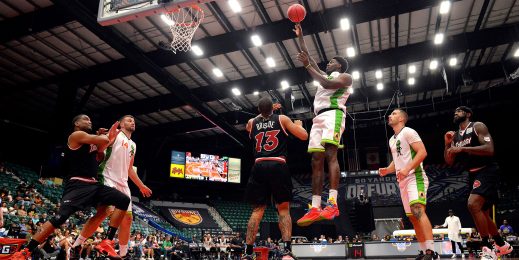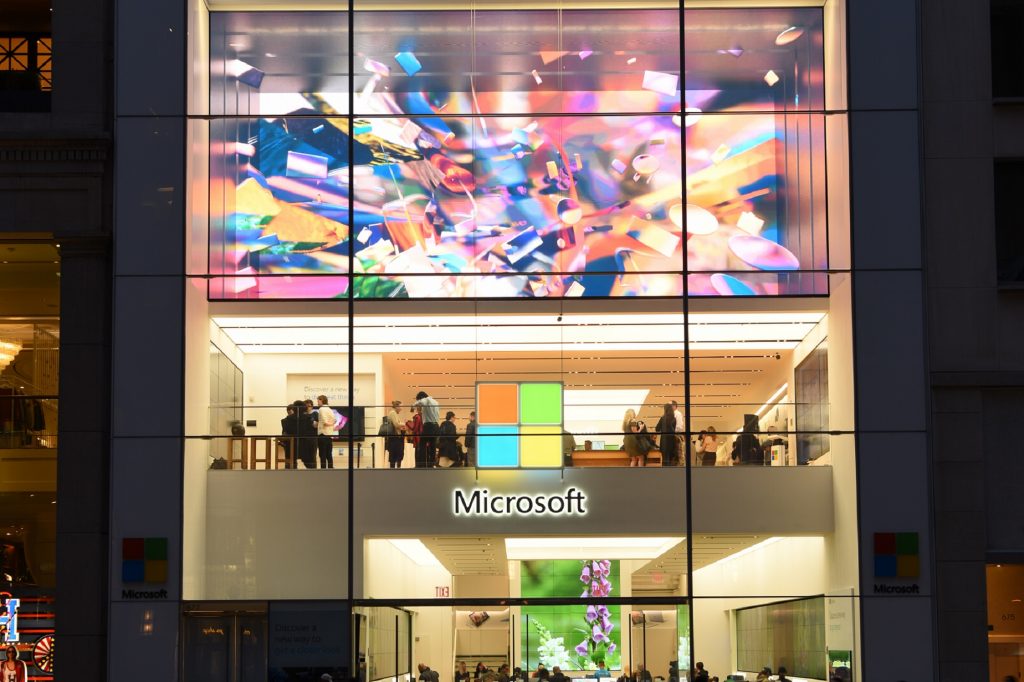
Flagship Microsoft Store debuts new art with digital artist Tabor Robak
In a few short years, Tabor Robak has become a breakout digital artist known for vivid, mesmerizing dreamscapes. His work has graced solo shows, international galleries and MoMA PS1, an affiliate of New York’s Museum of Modern Art.
But on Thursday, Robak debuted a new piece on his biggest, most prominent canvas yet: The 800-square-foot digital façade fronting the flagship Microsoft Store in New York. Displayed high above bustling Fifth Avenue, the cinematic piece, called “Sundial,” is part of a new collaboration between the five-story retail store and local artists.
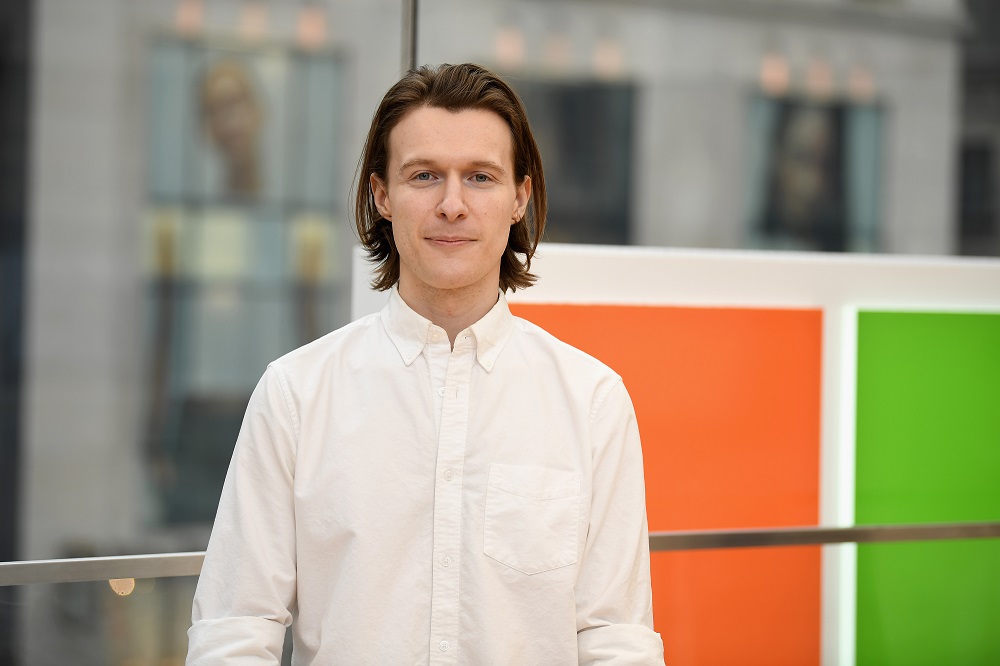
“People from all over the world come to New York City to create art, and I hope this installation is one that can inspire other creators to continue innovating,” says Robak, who lives in Brooklyn.
For the flagship, opened in 2015, the exterior screen isn’t just a big LED display, but a culture wall. Designed to display artistic imagery that is non-commercial, the culture wall is part of Microsoft’s vision of being an integral member of the community and New York’s vibrant Fifth Avenue area.
“At our flagship Microsoft Store, we have a tremendous opportunity to embed ourselves in the cultural scene and collaborate with local artists to push the boundaries of what is possible with digital content,” says Florin Gale, creative director for Microsoft Stores.
He envisions many kinds of visual artists — digital, textile, performance —creating art with the screen that explores dimension, complements the building and inspires others.
“In New York, art is a big component of the local culture and Microsoft’s mission of enabling people and organizations to achieve more absolutely applies to artists,” says Gale. “It’s about exploring: What can digital material look like on a façade of a building?”

A trio of abstract, looping videos, “Sundial” changes in color and feel depending on time of day, evoking the circadian and seasonal arcs of nature. At noon, the piece echoes the vitality of drivers, shoppers and pedestrians on the street. By midnight, it relaxes into a nocturnal, “lava-lampy” mood.
Likening the screen to a cloud in the sky, Robak created swirling colors and forms with nature as his muse, drawing inspiration from the creative energy of being outside.
“I would like for the artwork to be a little bit of nature — a breeze on Fifth Avenue — and a moment of peace in the middle of the workday,” he says.
The work and opportunity to show in a large public space is part of Robak’s lifelong passion for art and technology. As a boy, he loved computer graphics and video games for their creative ability to transport him to new worlds.
He started his graphic design career in high school by working in a print shop, making real estate flyers and retouching photos for online retailers. In college, he honed his motion graphics skills by making ads and interactive demos for major brands. He earned a bachelor’s degree in fine arts at Pacific Northwest College of Art in Portland, Oregon, where he grew up.
It’s about exploring: What can digital material look like on a façade of a building?
But when Robak graduated in 2010, the economy was struggling post-recession and he found himself applying for jobs while relying on his unemployment benefits. He used the time to focus on his personal art and soon moved to New York. Since then, Robak has found success with a series of well-received solo shows and group exhibitions in China, Japan and Europe.
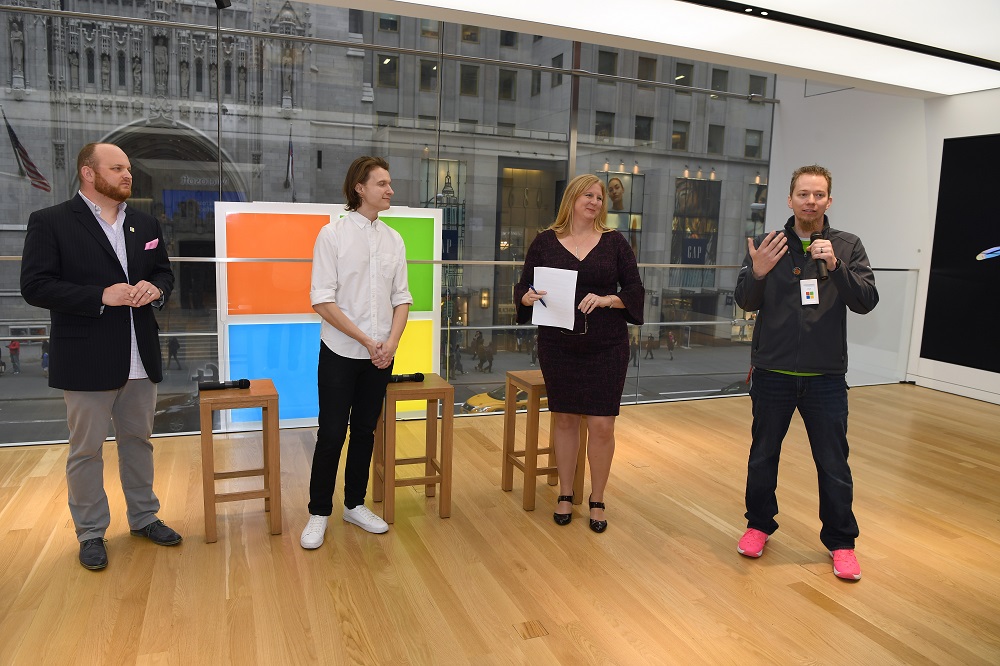
Robak’s digital abstracts are kaleidoscopic, dreamlike and kinetic, blending his commercial design skills, eye for fine art and love of video games. The pieces are choreographies of pixels that feel precise and organic, sometimes with familiar objects and smartphone iconography meshed in off-kilter ways.
He views the computer as a natural extension of himself, whether he’s sketching on his Surface Book, using a custom-built PC to show art as live images, or working on his desktop in the tidy apartment he shares with his dog, Rose Bunny.
“That feeling of what’s possible on a computer, which is basically anything, has always been very motivating and exciting for me,” he says. “The act of letting the real world disappear and forgetting yourself into the screen is an inspiring feeling in my work.”
“Sundial” will be on display at the flagship Microsoft Store at 677 Fifth Avenue for several months.
Lead image: Tabor Robak’s “Sundial” on the flagship Microsoft Store. (Photo by Dave Kotinsky/Getty Images for Microsoft)







